Beef; Always A Great Choice
Today Paul prepared the meal while Mary was working; turnaround is fair play!
Beef bourguignon or bœuf bourguignon, also called beef Burgundy, and bœuf à la Bourguignonne, is a French beef stew braised in red wine, often red Burgundy, and beef stock, typically flavored with carrots, onions, garlic, and a bouquet garni, and garnished with pearl onions, mushrooms, and bacon.
Making beef bourguignon requires the following ingredients:
- Olive oil
- Half pound thick sliced bacon, chopped
- 3 pounds stew beef, cubed
- 1 sweet onion, diced
- 2 carrots, chopped
- 1 pound of frozen pearl onions, thawed and drained
- Salt and pepper
- 1 tablespoon minced garlic
- 1 pound oyster mushrooms
- 1/4 cup flour
- 1 bottle Burgundy wine
- 2 cups of beef broth
- 1 tablespoon tomato paste
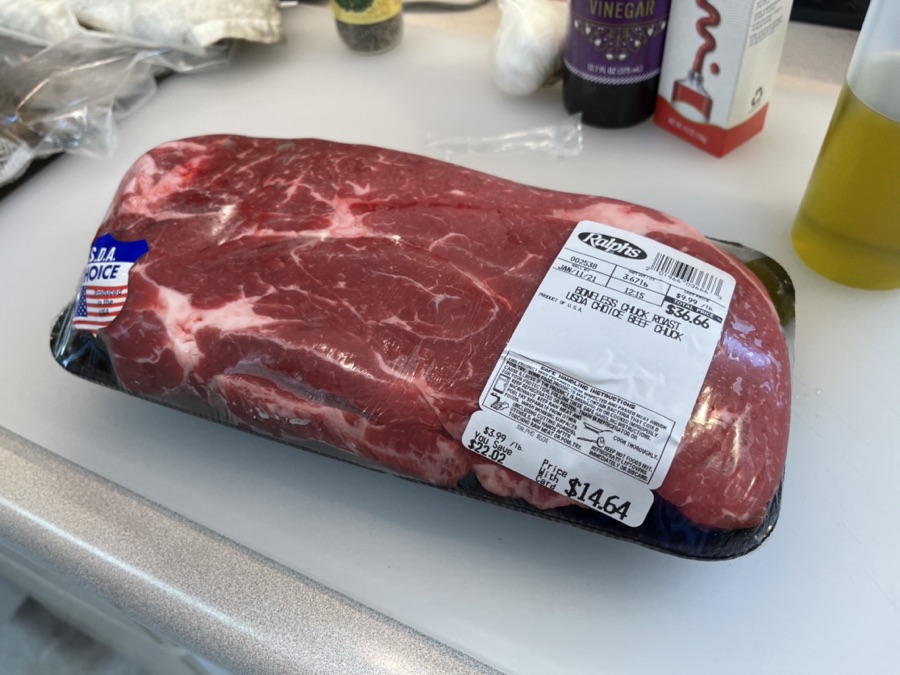
A cheaper cut becomes amazing after a long slow cook!
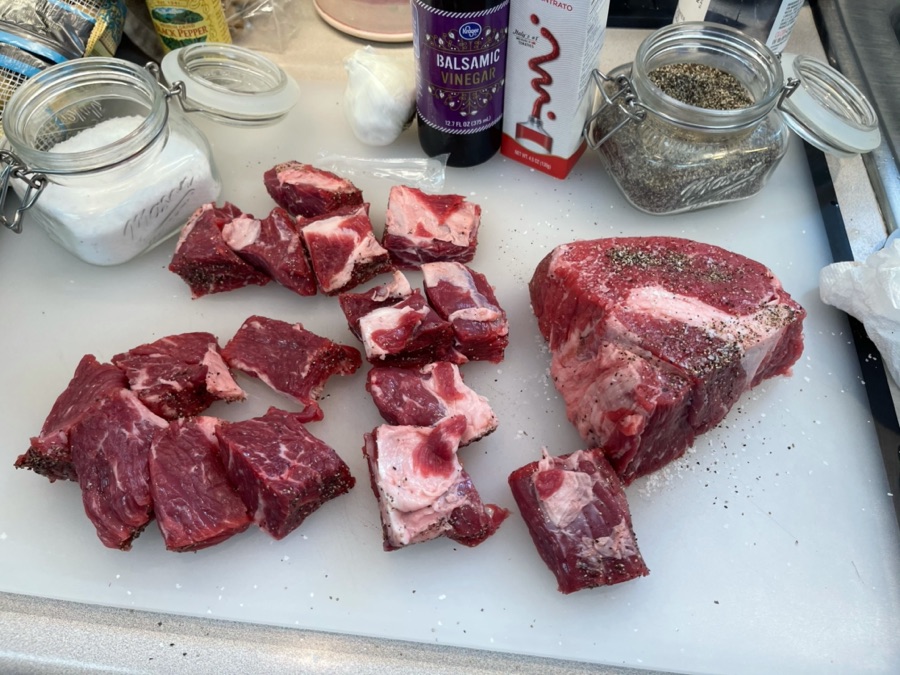
We chop it into one-inch squares
Browning is the process of partially cooking the surface of meat to develop its flavor through various browning reactions and give it a more attractive color. It is a common first step in cooking braised meats and stews.
Begin your recipe by adding the beef and flour to a ziplock bag and close it up. Shake until all the beef pieces are coated. You want to do this so that when you brown the beef you seal in all the moisture but also so that the beef bourguignon thickens without running the risk of clumps that could be caused by adding flour later in the recipe.
The goal is to brown the meat and, in doing so, give it flavour. This browning, called the Maillard reaction, happens when meat proteins join with sugar to form new molecules responsible for roasted aromas and flavours. The Maillard reaction requires heat to occur.
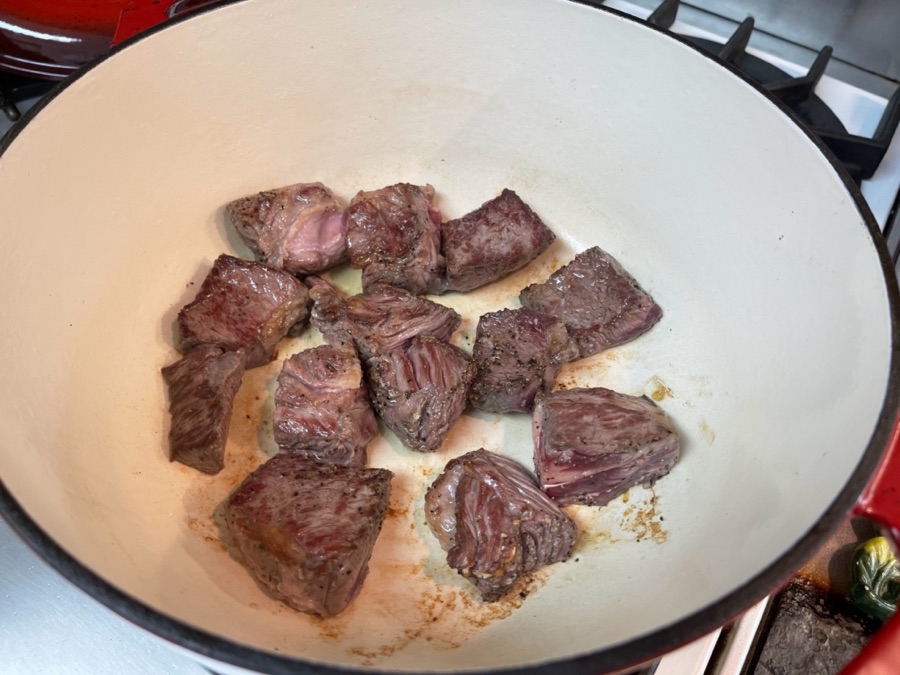
Just enough to add color and carmelize slightly.
Onions are a must! We heat them just to the point they get transparent.
The proper way to turn onions translucent is to put an even layer of them above melted butter, and wait for them to get ready, on medium heat. If the layer is thick, wait until the bottom ones are quite close to being done before mixing thoroughly once and then waiting again for the bottom ones.
Why do onions become translucent when cooked? As fat reaches higher temperatures than water, cooking usually occurs quickly, and you can easily see the onions become translucent as they move from raw to cooked. The pan is covered so the lid traps steam, which condenses and drips back on to the onions.
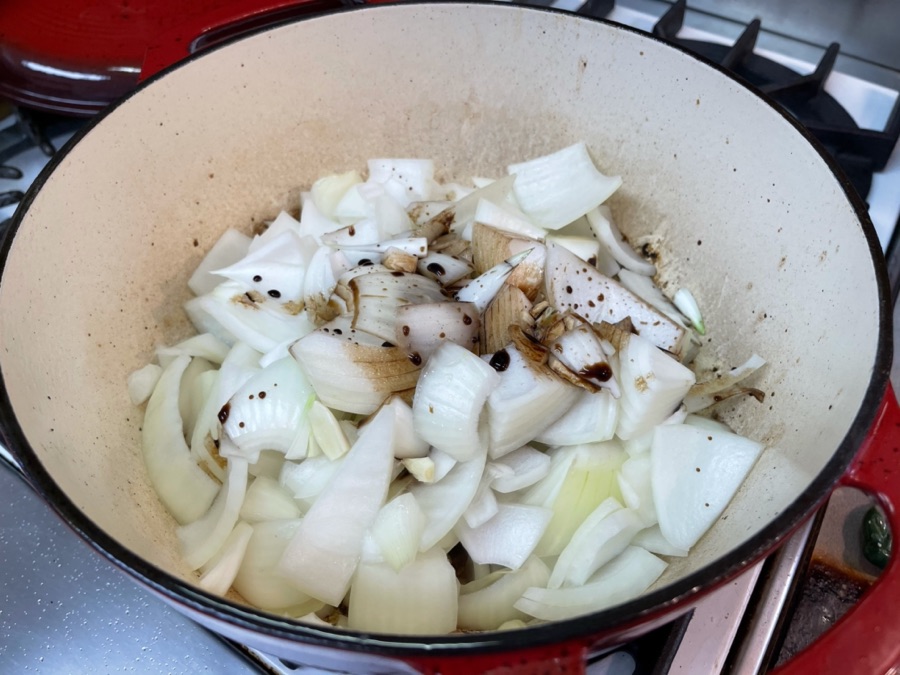
They look amazing as they move toward transparency!
Add the chopped carrots, diced onions, and pearl onions to the remaining bacon grease and olive oil. Season with the salt and pepper, then stir in the garlic and continue cooking until the onion is tender and translucent. Focus on the diced onions more than the pearl onions though they should be starting to soften. Stir the mushrooms in then cook for another couple of minutes.
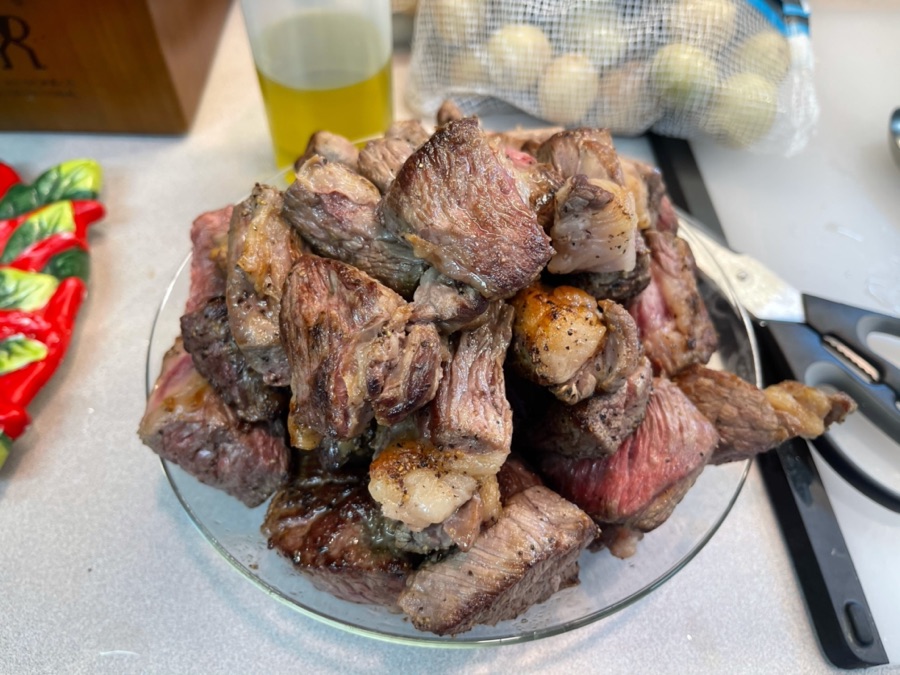
The beef is ready!
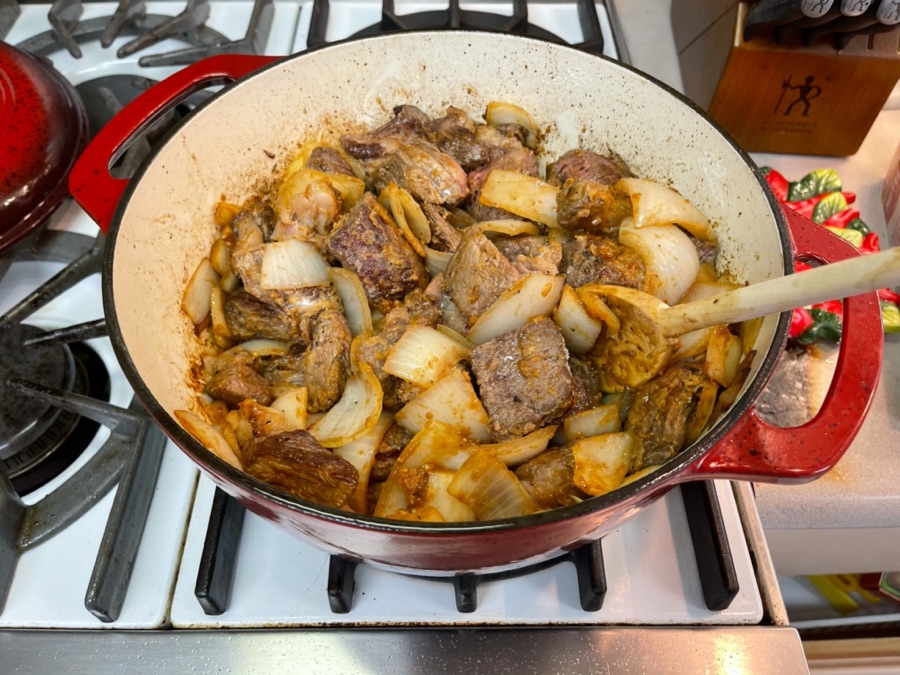
Into the Dutch over they go for about 4-6 hours of simmering.
While you are bringing the mixture to a boil, preheat your oven to 325 degrees Fahrenheit. Once the oven is ready and your stew is boiling, cover it with a lid and slide it into the oven. It should cook for two and a half hours. Every hour remove the lid and stir, being sure to scrape the bottom.
When placed inside an oven, Dutch ovens conduct heat and transfer it to the food inside from all directions. The ability of the cookware to hold this heat means that less energy is required for long, slow cooking methods. The ovenproof lid helps retain moisture and prevents drying during long cooking times.
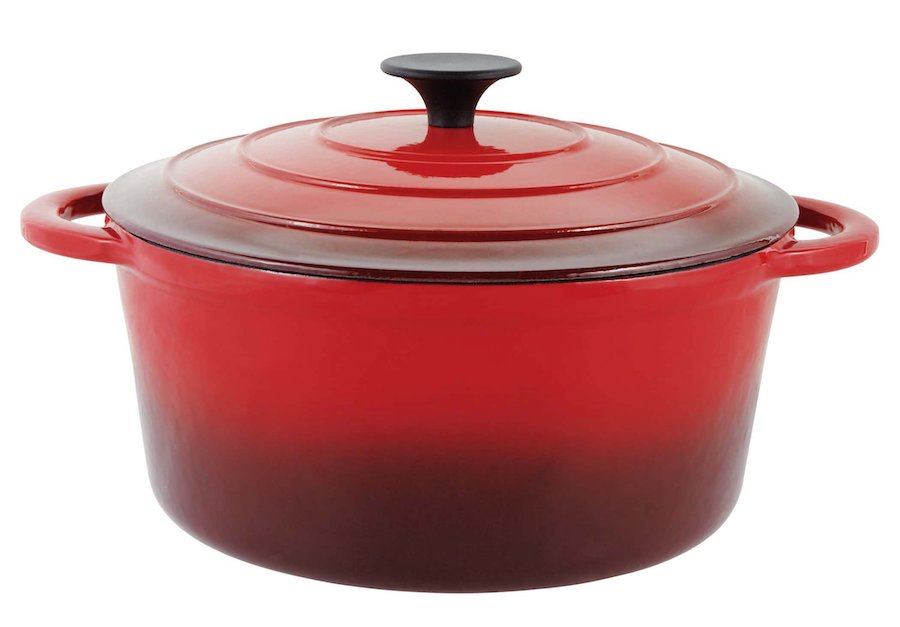
A good Dutch over is about $350!
It is called at Dutch oven after an English industrialist discovered a pot in The Netherlands made for cooking which was cast from sand molds. The English industrialist called Abraham Darby named it the Dutch oven as a homage to the Dutch.
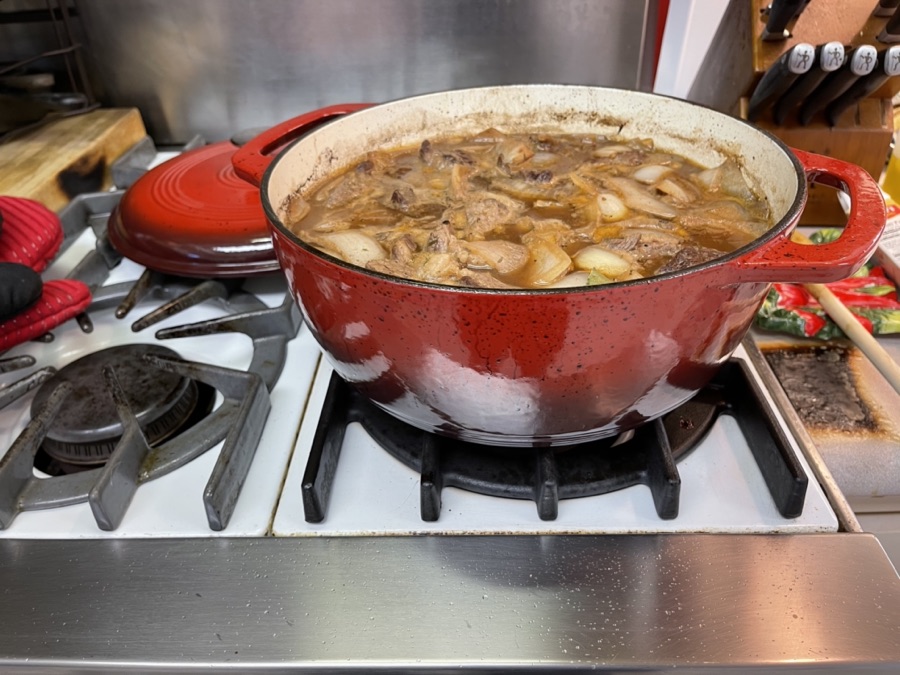
The entire house smells great!!
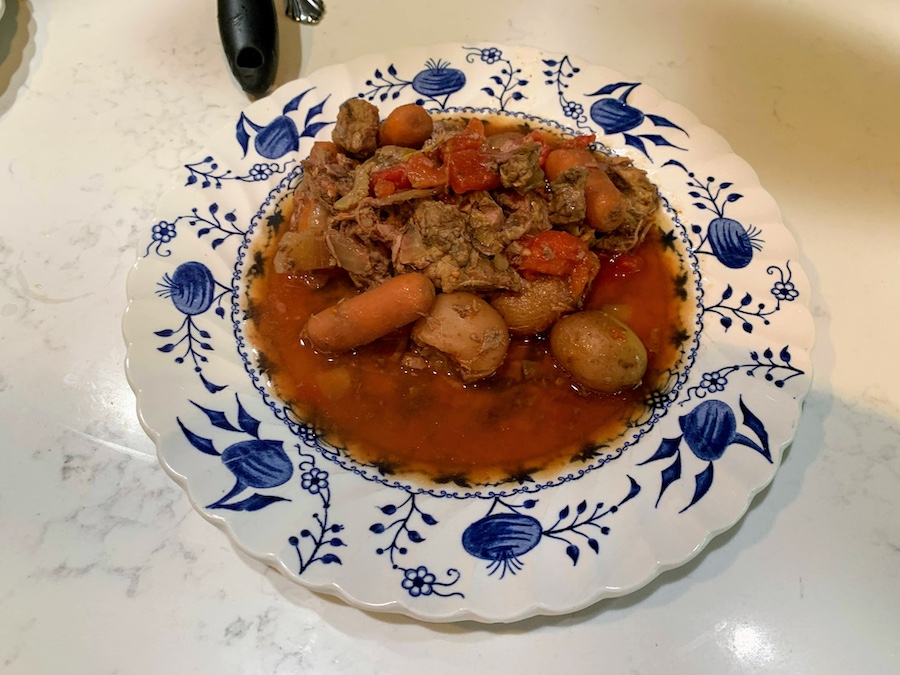
Time for a great meal!!!